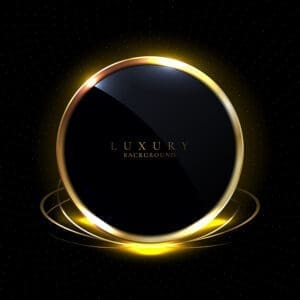 The rise of digital content has been a real test for travel print media. Consumer habits have changed, and with these changes many brands saw their circulation plunge. However, some print travel media brands have managed to survive against the odds. How? Through innovation, following trends, and creating multimedia platforms. Travel PR agencies offer expert advice about the best options to choose for promoting your travel brand; blending online with print is the best way forward.
The rise of digital content has been a real test for travel print media. Consumer habits have changed, and with these changes many brands saw their circulation plunge. However, some print travel media brands have managed to survive against the odds. How? Through innovation, following trends, and creating multimedia platforms. Travel PR agencies offer expert advice about the best options to choose for promoting your travel brand; blending online with print is the best way forward.
Magazines, guidebooks and newspaper supplements were once seen as the ultimate authority for travelers. But now websites are also seen as some of the biggest touchstones, along with a plethora of forums and blogs. This posed some problems for the traditional print media, but with a bit of ingenuity they managed to make the transition into digital media.
What propelled changes for print media?
Print brands were slow to adapt to changing media landscape and many at first struggled to figure out how to change their business model for the digital age. Despite the print brands having strong brand recognition and influence, free online content from TripAdvisor, Yelp forums, Expedia, YouTube et al sprung up as fierce competition, with real-time reviews competing against static print ones. However, traditional print media companies have come out the other side as Google’s Domain Authorities.
The situation was first complicated by the dramatic drop in advertising sales revenue in the wake of the 2008 global economic crisis, which led to staff cutbacks and content being reduced, and this all in turn exacerbated the drop in circulation. So even the print brands which wanted to create a digital platform found their hands were tied due to budget cuts. Brands slashed their marketing budgets, readers curbed their spending on print media and travelers skipped their vacations.
Travel + Leisure dropped from 1,481.11 ad pages in 2008 to 967.48 in 2011, according toÊThe Association of Magazine Media.ÊGuidebooks were also hit by the economic downturn, with print sales falling by 50%. This led to Travel + Leisure and The New York Times aggressively creating online content which attracted large readerships and secured their places as Domain Authorities ranking on the first page of Google results. They key to survival seems to have been a combination of doubling up on quality content, and creating a diverse range of additional content online including videos and clickbait articles to attract a wider audience.
It’s not all bad news: success stories
Going multimedia — and doing it well — is the key to success.
Google acquired Zagat restaurant guides for $151 million, and proceeded to integrate the information into Google Maps listings.
BBC Worldwide purchased Lonely PlanetÊfor $210 million in 2011 in a series of transactions beginning in 2007. In 2013, BBC sold off Lonely Planet to a US billionaire for just $75 million — but Lonely Planet has emerged from the ashes as the most successful guidebook brand in the world. It has invested heavily in its digital presence, as well as in apps and video content, alongside developing print and magazine titles.
Despite launching in the grip of the economic crisis in 2009, Afar managed to ride out the downturn. This was due to innovations such as slick design, harnessing the experiential travel movement, and providing fresh storytelling — all backed up with a solid digital resource for travelers. A savvy PR company knows how to mine this digital resource for our clients.
Print readership across the board shifted largely towards older and more affluent travelers. In 2013 both Travel + Leisure and Conde Nast Traveler re-orientated their coverage towards luxury consumers in an attempt to attract higher-spending advertisers. Conde Nast Traveler also eventually revamped its digital content, with shorter articles and only 1 per cent crossover content from the magazine, which continued with its comprehensive quality coverage, this time with even more emphasis on luxury travel. Travel + Leisure is also one of the leading online authorities on travel, ranking on page one of Google searches. Its revamped multimedia content includes as many as 500 videos online.
Influencer campaigns offer great value and impact
In 2016, LinqiaÊpolling found that marketers spent between $25,000 and $50,000 on social media influencers, who can typically combine blogging with videos and Facebook Live streams. Compare this with the price of one 4C full page ad in Travel + Leisure in 2016 for $157,000 — a brand could instead run up to six influencer campaigns for the same price.
At Abelow PR, we counsel our travel brand clients about the most effective ways of promoting their key messages. A 2017 report by Skift travel industry news website found that 57 per cent of destination marketing organizations think digital marketing has the best return on marketing spending. But travel PR firms like ours advise that combining print with multimedia and social media is the best way forward.
There’s still a place for travel print media, as the perception still remains that they provide something the online versions don’t; they are glossy, they have longevity and they have a staying power that digital media doesn’t. The print media brands which have survived the digital revolution are the ones which continually innovate and move with the times — something that’s imperative for all of us.
By Lorraine Abelow

Lorraine Abelow has had a 30-year, award-winning, boutique travel PR firm in New York City and is at the forefront of trends affecting traditional and digital media.ÊHer firm has represented such blue-chip names as Four Seasons and Hilton Hotels, as well as boutique properties across the globe and island destinations including St Barth’s and Necker. The agency’s affordable hotel PR campaigns are designed to move the needle regularly gaining eye-catching feature exposure in such top outlets as The New York Times, Travel and Leisure and Conde Nast Traveler. It’s the long-standing relationships the Abelow PR team has with high-level editors that insures coverage in A list media in every campaign. Coverage in influential blogs and social media campaigns round out Abelow PR’s expertise. Lorraine serves as an honorary judge for the Hotels Sales and Marketing International Association, from which she has won awards for her outstanding achievement over her illustrious career. For more information about this boutique New York City PR firm visit www.AbelowPR.com. You can contact her at Lorraine@AbelowPR.com or 203-226-9247.



















